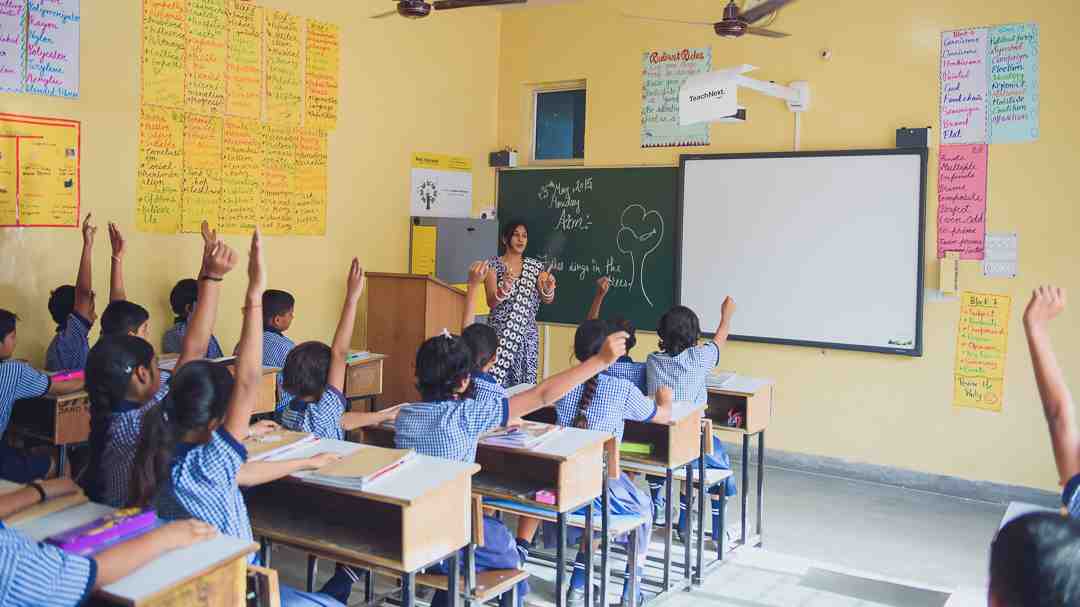
What does a school with a well implemented experiential learning program look like?
Adopting a new learning curriculum can be tricky for all stakeholders in a child’s education. A new format of learning poses initial challenges as teachers get used to new lesson plans, students get used to new learning activities and books, and parents constantly look for progress this change brings in their child. As school leaders, we understand the pressure of knowing that the efforts of teachers and the school system are working.
An experiential learning curriculum brings progress in the way students interact with and retain what they learn. Typically, the results of a well conducted experiential learning curriculum begin showing over the course of 2 or more academic years, in terms of students becoming more confident problem solvers, analytical thinkers and better scorers on exams. There are, however, very clear signs that the implementation of an experiential learning curriculum in your school is progressing in a positive direction.
You can be sure that the program is being implemented successfully in your school if you can spot these indicators:
- Progress in student behavior:
- You see more hands raised in class than before: A good quality experiential learning curriculum will always give students the space and time to ask questions, answer questions and express their understanding of a concept. You would know the curriculum is working if the number of students who want to ask and answer questions will increase.
- Quieter children start speaking, restless students are engaged: The aim of an experiential learning class is to engage every child in a classroom with activities, projects, experiments and discussions. A few months into the academic year, you’ll notice that disengagement and distraction in a classroom will begin to lower considerably, quieter students will develop the confidence to speak and ask more, and those who got distracted easily will begin getting engaged with concepts more deeply.
- Students ask better questions: As a curriculum starts developing Higher Order Thinking Skills (HOTS) among students, the students start responding by looking at new things and concepts around them critically to analyse not just the ‘what’, but the ‘how’ and ‘why’ around new things. The quality of doubts they, then, have in the classroom becomes better.
- Children communicate confidently in their own words: As students start discussing with the teacher and with peers in group activities, they begin to develop the skills of communicating their original thoughts effectively and confidently. As experiential learning encourages them to write original essays, debates, short stories etc, their original expression develops further.
2. Developments in Teacher Behaviour
- Teachers visibly struggle more: While this is one of the first challenges a school faces, teachers struggling to keep up is also one of the first signs of the implementation going well in a school. A new format of teaching puts teachers out of their comfort zone. Since it is not the same as rote learning or a classroom where teachers lecture and students listen, it pushes them to work harder with a student’s learning in focus.
- Teachers prepare and plan regularly: An experiential curriculum calls for the teacher to become a facilitator of learning. The teacher then needs to utilize the time and space of a classroom wisely to complete daily lesson plans with the right learning resources. If you see teachers preparing for classes daily and weekly, rest assured the curriculum will be a success in your school.
- Teachers are focused on classroom learning: while teachers deal with pressures of completing the syllabus on time and managing student behavior in the classroom, within the first few months you’d notice the attention of teachers moving towards student learning in the classroom. They will be focusing on looking for signs that students are learning and strategies to make learning more efficient and effective.
- Peer support in classrooms: One of the most evident signs that teachers are involved in the curriculum implementation is that staffroom conversations revolve around making each other better at their job. A new methodology of teaching is a challenge for everyone, and every teacher learns in her own time. As peers get more empathetic to each other’s struggles and offer support, you’d know that experiential learning is contributing to the students and faculty equally.
3. Changes in the classroom spaces
- The classroom space and seating are more flexible: To accommodate concept related activities in groups and pairs,
children are no longer bound by a table and chair. They can work with each
other better and are aware that the mutual goal is learning. - The classroom is more organized:
With the new curriculum, the classroom will become more organized with a
dedicated storage space for activity resources, workbooks and student projects.
As every student conducts activities in every class, students will be more
sensitive to using resources and disposing of activity waste responsibly. - The classroom is more vibrant and displays students’ work: As students participate more deeply with
learning and learn to express themselves creatively, the classroom community
will begin taking pride in each other’s work. The bulletin board and
decorations in the room will become more vibrant and start displaying talent,
skill and conceptual understanding of the students.





